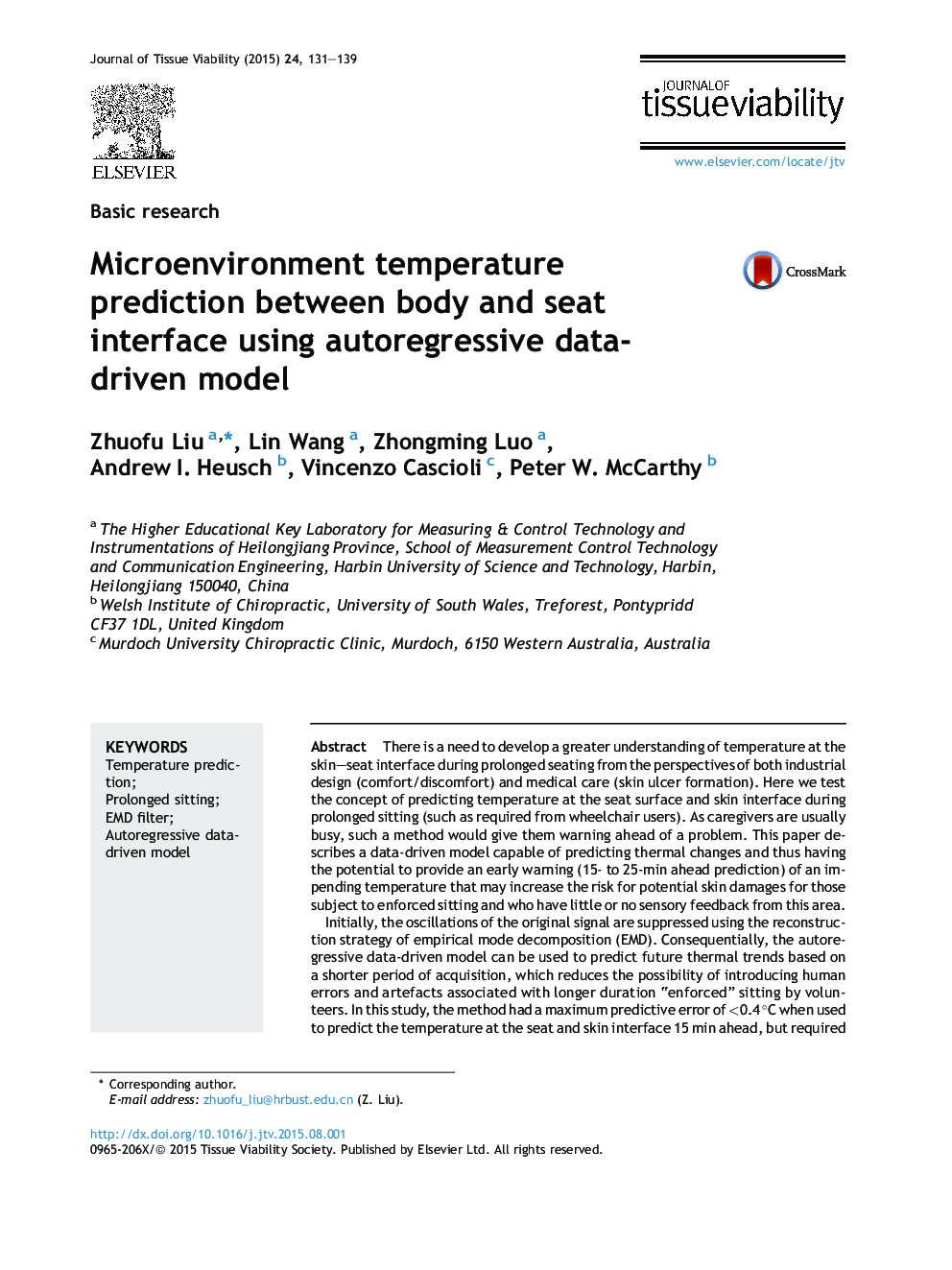| Article ID | Journal | Published Year | Pages | File Type |
|---|---|---|---|---|
| 2671300 | Journal of Tissue Viability | 2015 | 9 Pages |
•Skin-seat interface temperatures were measured over one hour.•The data was used to determine the accuracy of a temperature prediction algorithm.•The skin-seat interface temperature tends to plateau from 40 minutes onwards.•The method is able to predict temperature at this interface in the final 15 minutes.
There is a need to develop a greater understanding of temperature at the skin–seat interface during prolonged seating from the perspectives of both industrial design (comfort/discomfort) and medical care (skin ulcer formation). Here we test the concept of predicting temperature at the seat surface and skin interface during prolonged sitting (such as required from wheelchair users). As caregivers are usually busy, such a method would give them warning ahead of a problem. This paper describes a data-driven model capable of predicting thermal changes and thus having the potential to provide an early warning (15- to 25-min ahead prediction) of an impending temperature that may increase the risk for potential skin damages for those subject to enforced sitting and who have little or no sensory feedback from this area.Initially, the oscillations of the original signal are suppressed using the reconstruction strategy of empirical mode decomposition (EMD). Consequentially, the autoregressive data-driven model can be used to predict future thermal trends based on a shorter period of acquisition, which reduces the possibility of introducing human errors and artefacts associated with longer duration “enforced” sitting by volunteers. In this study, the method had a maximum predictive error of <0.4 °C when used to predict the temperature at the seat and skin interface 15 min ahead, but required 45 min data prior to give this accuracy. Although the 45 min front loading of data appears large (in proportion to the 15 min prediction), a relative strength derives from the fact that the same algorithm could be used on the other 4 sitting datasets created by the same individual, suggesting that the period of 45 min required to train the algorithm is transferable to other data from the same individual. This approach might be developed (along with incorporation of other measures such as movement and humidity) into a system that can give caregivers prior warning to help avoid exacerbating the skin disorders of patients who suffer from low body insensitivity and disability requiring them to be immobile in seats for prolonged periods.
